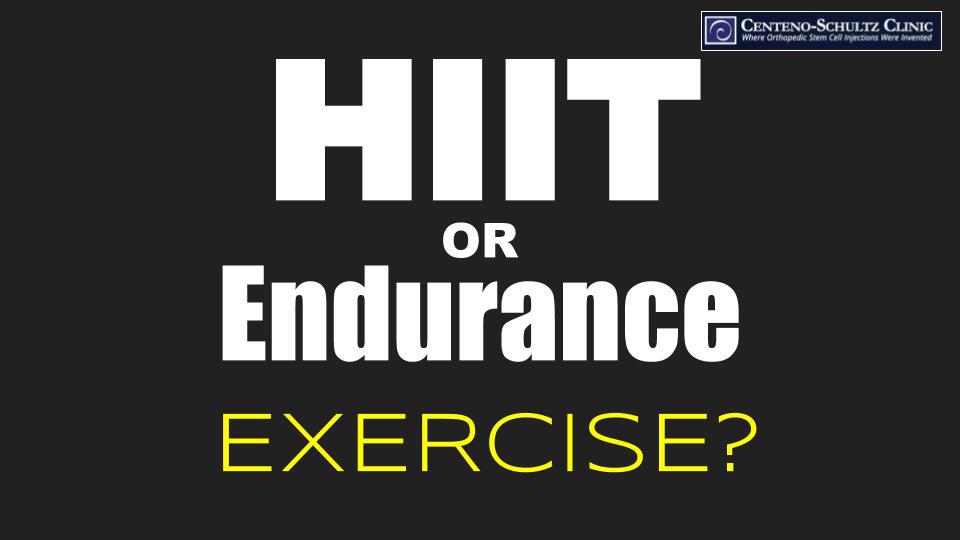Hit any gym in your area and you’ll encounter those with strong opinions on the benefits of high-intensity interval training (HIIT) over endurance exercise and vice versa. The truth is, there are benefits to both, as those who participate in, for example, a CrossFit class (HIIT) one day and an aerobics class (endurance) the next could probably attest to. While both forms of exercise may make us feel and look better, the real test is in which is more effective at the cellular level as healthy cells are the building blocks for healthy tissues and organs and an overall healthy body. So which form of exercise—HIIT or endurance—is better at keeping our cells healthy? Before we review recent research on this, let’s take a look at cell anatomy.
The Anatomy of a Cell, and the Mighty Mitochondria
A cell houses many structures, called organelles. Each organelle has its own important functions but they all work in collaboration to properly run the whole cellular machine. Some of these structures include the cytoplasm, the mitochondria, and the nucleus. The nucleus contains our genes in our DNA, which determines everything from eye color to body type to predisposition to disease, and so many other things that make us unique individuals. Our cells are powerful structures indeed, but if one cellular structure can be crowned the most “powerful,” in the literal sense, it would have to be the mitochondria.
Mitochondria are the batteries of the cell. In other words, if the mitochondria are healthy and functioning properly, the power stays on and all other structures of the cell can do their job; however, if the cellular batteries weaken and die, the power is cut, the other structures have no energy source, and the cell dies. One way to keep the mitochondria healthy is through the food we consume, as it’s our food that the mitochondria convert into chemical energy, or its fuel that powers the cell. Another important aspect of keeping our mitochondria healthy is to keep them well charged through exercise. And, indeed, it’s the mitochondria we want to examine when questioning what type of exercise is best at keeping our cellular energy at full power.
HIIT or Endurance Exercise? Our Cells Love Both
The core differences between high-intensity interval training and endurance exercise are intensity level and actual active time in motion. HIIT consists of very intense bursts, or intervals, of exercise with rest breaks between each burst. For example, burpees for 30 seconds with a 30 second rest before moving to the next exercise. The entire HIIT session may last for 30 minutes with many high-intensity bursts and rests within that time. Endurance exercise is typically structured at a low to moderate intensity for a longer period of active nonrest time, for example 30 minutes or an hour.
One study investigated which form of exercise was most beneficial to the cellular mitochondria by analyzing three intensity levels:
- Moderate Intensity (50% effort): 30 minutes of continuous cycling
- High Intensity (75% effort): 4 minutes of cycling with 1 minute of rest for five interval cycling sessions
- Maximum Intensity (100% effort): 30 seconds of cycling with 4.5 minutes of rest for four interval sprint cycling sessions
Benefits to the mitochondria were similar in all three intensities of exercise. In other words 30-second bursts of maximum-intensity sprint cycling were comparable to 30 minutes of moderate-intensity continuous cycling. So whether you are pro HIIT or pro endurance exercise, it doesn’t really matter to your cells; your cells thrive with both. The takeaway here is to just keep exercising no matter which you choose.
More Reasons to Exercise
Healthy cells are only one of many benefits to exercise. Let’s review a few others:
- Some studies support the effects of exercise on dementia, while some conclude the lack of benefits to dementia; however, one thing they do agree on is that those with dementia do benefit from fitness improvements with exercise.
- Exercise may lower the genetic risk for obesity, particularly in those over age 70.
- Middle aged? You aren’t too old to start exercising; you can still enjoy benefits to heart health when you start exercising in middle age.
- The immune system slows as we age. Exercise keeps the immune system healthy despite aging.
In addition, we highlighted 10 additional benefits to exercise a few months ago at this link.
So HIIT or endurance exercise for healthy cells? Today’s feature study confirms either is just as beneficial. Just keep exercising! It’s worth noting that one downside we see in the clinic with HIIT is higher injury rates, so know your limits and seek proper balance in whatever exercise choices you make.
